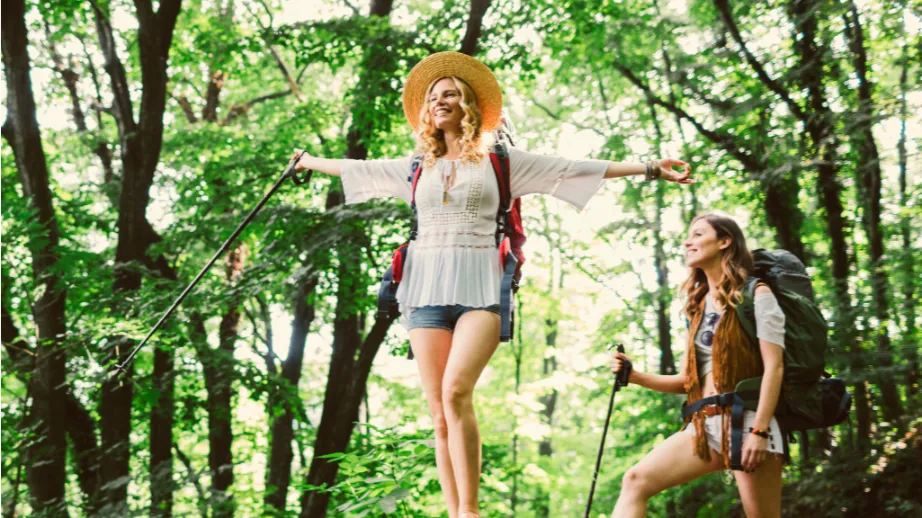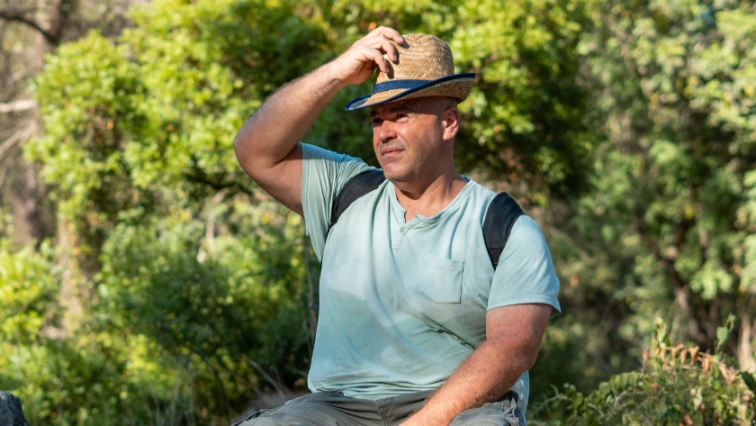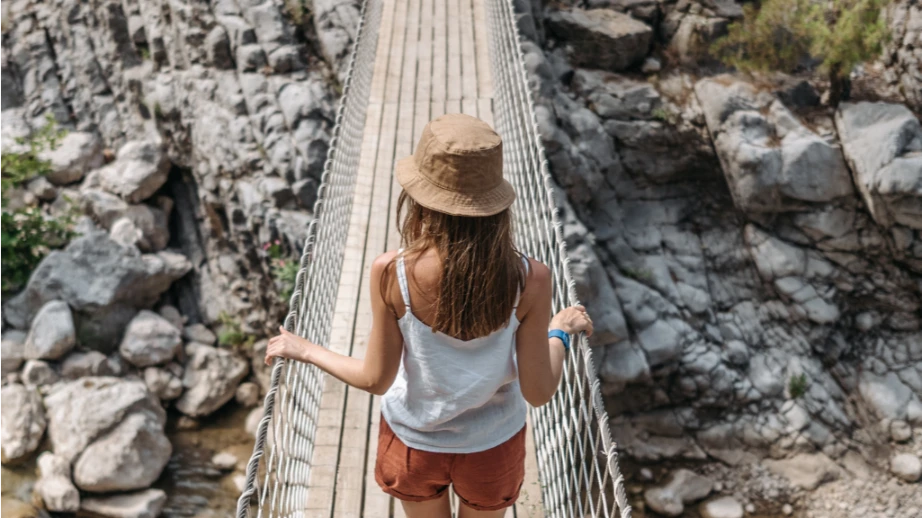When you think of hiking gear, straw hats probably aren’t the first thing that pops into your mind. They’re often dismissed as mere fashion accessories, perfect for a city stroll but not much else. But here’s where I beg to differ, and I’m excited to share why.
In my years hitting every type of trail, some of the best straw hats have not only made it into my hikes but have also enhanced them.
That’s why I genuinely believe that straw hats deserve a spot in your hiking wardrobe. I’m not saying they’re the perfect fit for every single hike out there. Like any piece of gear, they have their moments to shine and their limitations.
Let’s break down the myths, highlight their unexpected perks, and consider when it might be better to leave them at home.
Are Straw Hats Good for Hiking?
Generally speaking, straw hats are good for hiking. Although I usually lean towards hats made from materials like polyester or nylon because they’re lightweight and dry quickly, straw hats are great for hiking in some scenarios:
- Hot, Dry Weather: If you’re hiking in an area where the air is dry and the sun beats down, a straw hat can be useful. Its natural ventilation keeps your head cool, letting the breeze flow through with ease.
- Open Trails With Little Shade: Trekking across open fields or rolling hills? A straw hat with a wide brim will shield your face and neck from the sun’s relentless rays.
- Casual, Short Hikes: For those leisurely strolls where you’re soaking in the sights more than breaking a sweat, a straw hat fits the bill perfectly. It’s stylish, comfortable, and does the job without overdoing it.
Having this out of the way, let’s discuss some pros and cons of wearing a straw hat on a hike.
Pros of Straw Hats for Hiking

Lightweight and Breathable
Can you imagine walking under the blazing sun with a heavy hat pressing down on your head? Straw hats are different, typically weighing in at less than 10 ounces.
Although straw hats are still a few ounces heavier than other types of hats like bucket or tucker hats, this weight on your head still feels like you’re barely wearing anything at all. And when the mercury climbs up to 90°F, you’ll thank yourself for choosing something so light.
But it’s not just about the weight. The real magic of a straw hat lies in its breathability. These hats allow air to circulate freely, keeping your head cool even when the rest of you is working up a sweat.
And what about those really hot days? Here’s a trick I use: Wet your straw hat a bit before heading out. As the water evaporates, it’ll help cool you down even more. Just make sure your hat can handle a bit of moisture without falling apart – not all straw hats are created equal in this regard.
Sun Protection
Wide Brim Advantage
A straw hat with about a 3/4″ brim size is invaluable because it throws shade in the best way possible. It keeps the sun off your face, neck, and even shoulders, reducing your exposure to UV rays. I’ve hiked through places like Zion National Park, where shade is a rare commodity, and my wide-brim straw hat has been invaluable.
UV Protection
The Sunday Afternoons Havana hat (which tops our ranking of the best straw hats for hiking) boasts a UPF 50+ rating, offering top-notch protection against UV rays.
While straw hats might seem fragile at first glance, the Havana proves that they can provide equal, if not better, sun protection compared to other types of hats. It’s stylish, sure, but more importantly, it’s a reliable partner that keeps me safe under the sun.
Style and Customization
Let’s start with the undeniable fact: straw hats look cool. Picture yourself walking through a scenic trail of the English countryside or the rugged terrains of the American Southwest, your straw hat adds that perfect touch to your hiking outfit.
Customization Options
Now, the fun part – making that hat truly yours. One of the coolest things about straw hats is how easy they are to customize. Let me share a couple of tricks I’ve picked up on my trails:
Bandanas: This is my go-to for adding a pop of color and personality to my hat. Wrapping a vibrant bandana around the base not only jazzes it up but also serves a practical purpose – a bandana acts as an extra layer of sweat absorption, keeping beads of perspiration from trickling down. You can also easily switch them out to match your hiking gear or mood for the day.
Cloth Liners: For especially hot days, I like to line the inside of my straw hat with a thin, absorbent cloth. It’s like having a built-in sweatband. You can either buy these liners or DIY them from an old t-shirt. Not only does it ramp up the comfort level, but it also helps keep your hat in better shape by protecting it from sweat stains.
The goal here is to make your straw hat a reflection of your unique style. Experiment with different bandanas, pins, or even feathers (why not?) to find what speaks to you.
Cons of Straw Hats for Hiking

Durability Concerns
Straw hats, especially the lighter ones, can be delicate. They don’t take kindly to being squished in backpacks or sat on (a moment of silence for the hats we’ve lost this way).
But it doesn’t have to be this way. The trick is handling them with care. Always make sure your straw hat has its own space when you’re not wearing it. Respect it, and it’ll keep you shaded for many hikes to come.
Damage When Not Worn
Once, I left my straw hat in the back of my car, thinking it would be fine until the next sunny day. The heat and confinement did a number on it, warping its shape beyond recognition.
So, what can you do? Find a cool, dry place to store your hat between hikes. Avoid leaving it in direct sunlight or in hot cars. A little foresight goes a long way in keeping your hat hike-ready.
Palm Over Regular Straw
I love straw for its appeal but after a few mishaps with regular straw hats, I switched to palm straw, and it was a revelation. They boast toughness that their regular counterparts can only dream of. They handle the elements perfectly, from scorching sun to unexpected rain showers.
Personally, I have a soft spot for Stetson hats. My husband bought their Sawmill Hat made from palm straw some time ago but it’s yet to be used on a hike.
If longevity is what you’re after, palm straw is the way to go. It’s a bit of an investment, but for a hat that keeps up with your outdoor lifestyle, it’s well worth it.
TechStraw Material
TechStraw is yet another great alternative for those looking for a more durable and low-maintenance straw hat. It’s an artificial straw made from handwoven polypropylene that is lightweight and extremely durable, waterproof, washable, and offers excellent sun protection.
The Riverz Straw Hat is a prime example of a TechStraw hat. It’s perfect for hiking, gardening, or simply lounging by the pool. It’s also made from recyclable materials so you can feel good about your purchase.
Performance in Weather Conditions
Wind Challenges
Lightweight straw hats, while perfect for keeping your head cool, do have a knack for taking flight at the slightest provocation. I’ve had my share of hat-chasing episodes!
But here’s a trick I’ve picked up: look for straw hats with a chin strap. It might seem a bit old-school, but it’ll keep your hat in place and save you from the awkward “excuse me, can you grab my hat?” conversation with fellow hikers.
And if you’re not into straps, choosing a slightly heavier palm straw hat can also help counteract the wind’s efforts.
Water Resistance
If there’s one thing straw hats aren’t, it’s waterproof. Here’s the thing, though. While straw hats might not be your best choice in a downpour, there are ways to make them a bit more forgiving of the odd sprinkle.
Some straw hats come with a water-resistant coating. They won’t keep you dry in a monsoon, but they’ll handle a light drizzle without a doubt. Also, carrying a lightweight, packable rain hat as a backup isn’t a bad idea as it takes up minimal space.
Comfort and Practicality
Straw hats provide style and breathability, but when it comes to dealing with sweat? Not so much.
Unlike some of your high-tech gear, straw hats don’t come with built-in sweat-wicking powers. This means when the humidity levels soar above let’s say 80%, your head might feel like it’s in a sauna.
But there’s a workaround. I always recommend wearing a thin, moisture-wicking headband underneath. It’s a simple fix that doesn’t sacrifice the look or feel of your beloved straw hat.
Fit and Comfort
Here’s another crucial aspect: fit. Ever had a hat that seemed to have a mind of its own, choosing to take flight with every gust of wind? Or one that squeezed your head like it was out for revenge?
With straw hats, getting the right fit isn’t just about comfort. It’s about keeping your hat where it belongs – on your head, not the trail behind you.
Finding a straw hat that fits well is more art than science. Here are a few pointers I swear by:
- Measure Your Head: Grab a tape measure and wrap it around your head where the hat would sit. Knowing your size is half the battle.
- Look for Adjustable Features: Some straw hats come with an inner band that you can tighten or loosen. This is a lifesaver for getting that just-right fit.
- Try Before You Buy: If you can, try on different styles and sizes. Each hat has its own personality, and you’ll know when you’ve found the one.
A well-fitting straw hat feels like it’s barely there. It stays put without begging for constant adjustments.
Conclusion
It’s clear that straw hats come with their set of pros and cons. Despite these ups and downs, I’ll still be grabbing my straw hat for many hikes to come. Not only do I look great in them (if I do say so myself), but the comfort and features they offer just can’t be ignored.
Feeling good and looking good while hitting the trails add to the joy of hiking. And isn’t that what we’re all here for? The joy of it? Straw hats, with their breezy ventilation and lightweight charm, make sunny hikes a bit more bearable and a lot more stylish.
Give it a try. See how it feels to walk under the sun with a bit of natural breeze flowing through your hat, keeping you cool. Notice the difference in your comfort level and how it impacts your overall hiking experience.

Martha Heller
Hey there! I’m Martha, the face behind BigfootHiking.com – a blog I created alongside my husband Lukas. Originally from Phoenix, I’ve made hiking my life’s passion. With over 100 hikes under my belt in the past 7 years, and still counting, I’m always on the move. One of my proudest achievements was conquering Angel’s Landing in Zion National Park. When I’m not on the trails, you’ll find me tinkling on the piano or lost in my drawings. Drop by our blog for tips, tales, and plenty of trail inspiration!




